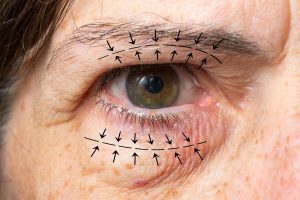OPENING TIME: MON-SAT (8:00AM-8:00PM*)SUN:8:00AM-1:00PM
Oculoplasty Services at Dr. Aswini's Naitrika Superspeciality Eye Care
 Overview of Oculoplasty
Overview of Oculoplasty
Oculoplasty, also known as oculoplastic surgery, is a specialized branch of ophthalmology that focuses on the health and functionality of the eyelids, tear ducts, orbit (bony cavity surrounding the eye), and the face. These procedures can be both medically necessary and cosmetic, aimed at improving the appearance and function of the eyes and surrounding structures.
Types of Oculoplasty Services
Eyelid Surgery (Blepharoplasty)
- Upper Blepharoplasty: Removes excess skin, muscle, and fat from the upper eyelids to improve vision and appearance.
- Lower Blepharoplasty: Addresses puffiness, bags, and wrinkles under the eyes by removing or repositioning fat and skin.
- Functional Blepharoplasty: Performed to correct vision impairment caused by droopy eyelids.
Ptosis Repair
- Congenital Ptosis Repair: Corrects drooping eyelids present at birth, which can interfere with vision development.
- Acquired Ptosis Repair: Addresses ptosis that develops later in life due to aging, trauma, or medical conditions, improving both function and appearance.
Tear Duct Surgery
- Dacryocystorhinostomy (DCR): Creates a new tear drainage pathway for blocked tear ducts to alleviate excessive tearing.
- Punctal Plugs: Tiny, biocompatible plugs inserted into the tear ducts to treat dry eye by preventing tear drainage.
Orbital Surgery
- Orbital Fracture Repair: Reconstructs the bony orbit to restore normal anatomy and function following trauma.
- Orbital Decompression: Reduces pressure within the orbit for conditions like thyroid eye disease, alleviating symptoms such as bulging eyes.
- Tumor Removal: Surgical excision of benign or malignant tumors within the orbit.
Reconstructive Surgery
- Eyelid Reconstruction: Repairs eyelid defects or deformities resulting from trauma, cancer excision, or congenital anomalies.
- Socket Reconstruction: Restores the eye socket’s structure for patients with anophthalmia (absence of an eye) or after enucleation (eye removal).
Cosmetic Procedures
- Botox Injections: Reduces wrinkles and fine lines around the eyes and forehead by temporarily paralyzing underlying muscles.
- Dermal Fillers: Plumps and smooths areas around the eyes and face to enhance appearance and reduce signs of aging.
- Chemical Peels and Laser Resurfacing: Improves skin texture and tone, reducing pigmentation and fine lines around the eyes.
Indications for Oculoplastic Surgery
- Functional Needs: To correct vision impairment, improve tear drainage, treat chronic infections, and alleviate discomfort or pain.
- Cosmetic Concerns: To enhance appearance, reduce signs of aging, and address asymmetry or deformities.
- Trauma: To repair damage from accidents or injuries affecting the eyelids, tear ducts, or orbit.
- Medical Conditions: To treat conditions such as thyroid eye disease, tumors, congenital abnormalities, and involutional changes (age-related changes).
Benefits of Oculoplastic Surgery
- Improved Vision: By addressing eyelid drooping and other obstructions.
- Enhanced Appearance: By rejuvenating the eye area, leading to a more youthful and refreshed look.
- Increased Comfort: By alleviating symptoms such as tearing, dryness, or irritation.
- Restored Functionality: By reconstructing damaged or malformed structures.
- Boosted Self-Confidence: By improving both functional and aesthetic aspects of the eye region.
Pre-Operative Care
- Comprehensive Evaluation: Thorough assessment to understand the patient’s needs, expectations, and overall health.
- Diagnostic Imaging: Utilization of imaging technologies like CT scans or MRIs for detailed analysis.
- Discussion of Options: Detailed explanation of surgical options, risks, benefits, and expected outcomes.
- Preparation Instructions: Guidelines on pre-surgery preparations, including medication adjustments and lifestyle modifications.
Post-Operative Care
- Follow-Up Visits: Regular check-ups to monitor healing and address any complications.
- Medications: Prescriptions for antibiotics, anti-inflammatory drugs, or pain relief as needed.
- Activity Restrictions: Recommendations on activities to avoid during the recovery period to ensure optimal healing.
- Care Instructions: Guidance on wound care, eye hygiene, and signs of potential complications.
Why Choose Dr. Aswini’s Naitrika Superspeciality Eye Care for Oculoplasty?
- Expertise: Dr. Aswini Kumar Behera’s extensive training and experience in oculoplastic surgery ensure high-quality care.
- Advanced Technology: State-of-the-art surgical and diagnostic equipment for precise and effective treatments.
- Patient-Centric Approach: Personalized care plans tailored to meet individual needs and goals.
- Comprehensive Services: Full range of oculoplastic procedures under one roof.
- Supportive Environment: Compassionate and professional team providing support throughout the treatment journey.
